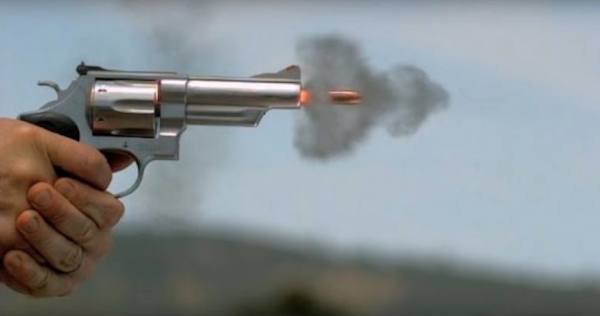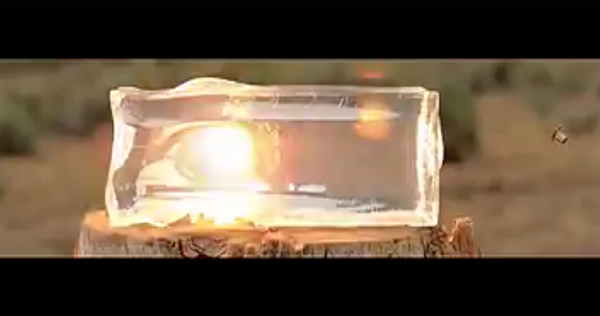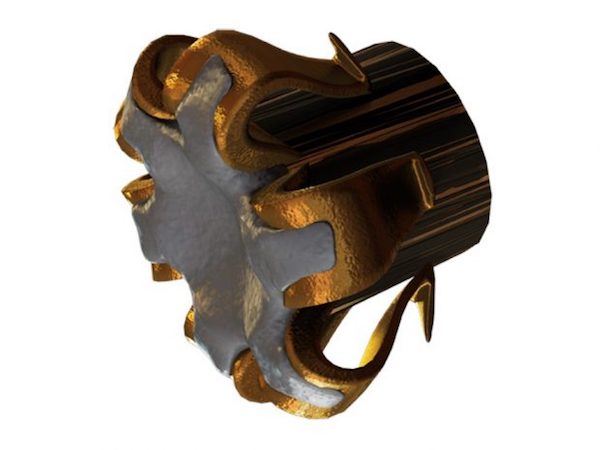
In slow motion you can see the ballistic gelatin twist, turn, expand, contract, distort and explode as a .44 magnum tears through the clear turbulent mass.
Why Does It Explode? Eric Winn explains Sonoluminescence.
It doesn’t actually explode. The flash of light you sometimes see during a ballistic gelatin test is known as a sonoluminescent event. Sonoluminescence is the emission of short bursts of light from imploding bubbles in a liquid when excited by sound. Put simply it is a collapsing air chamber that explodes due to a violent change in pressure. How does this occur in ballistic gelatin?

As the bullet strikes the target it creates a gap of air inside of the gelatin. We often refer to this as the temporary cavity. Before the block collapses down to its original shape, the air is low pressure and low temperature. Sometimes these air bubbles can become trapped when their escape route to the atmosphere is cut off by collapsing gelatin. In this case the collapsing gelatin compresses the air driving the pressure and temperature up almost instantly.

If this occurs violently enough the air can reach temperatures in excess of 4,500K (7640F or 4226C). This causes the molecules to emit a burst of light that we sometimes are able to catch with our camera. These instances of sonoluminescence can occur in as little as 35 trillionths of a second. These events leave an expanding hot gas bubble inside of the gelatin that escapes through the permanent cavity to the atmosphere

The distorted bullet emerges from the gelatin mass like this. Look closely and you can see it on the right just after exiting.
VIDEO: .44 Magnum Blasts Through Ballistic Gelatin Creating ‘Sonoluminescent Event’
sources: Drop Supply, Facebook, Youtube, Wikipedia